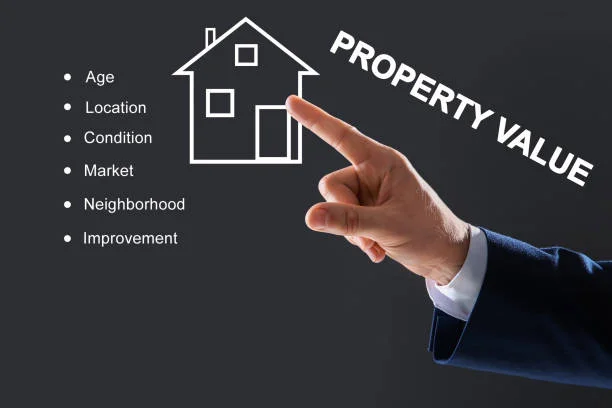Selling a home is one of the most important financial decisions a homeowner can make. Whether you’re moving to a new city, upgrading to a larger space, or downsizing for retirement, the value of your current property plays a huge role in what comes next Increase Property Value. The good news is that you don’t have to rely solely on market conditions to determine what your home is worth. With the right improvements and strategies, you can significantly increase your property’s value before putting it on the market.
Boosting your home’s appeal doesn’t always mean major renovations. In fact, many of the most effective upgrades are surprisingly practical. From enhancing curb appeal to refreshing interiors, the right touches can help your home stand out, attract serious buyers, and secure higher offers.
Why Property Value Matters Before Selling
Property value isn’t just about numbers on a listing; it shapes how buyers perceive your home and what they’re willing to pay. A well-maintained and updated property often sells faster and at a better price than a home that looks neglected or outdated.
Buyers want to imagine themselves living in a space that feels fresh, functional, and move-in ready. When they see signs of care and attention to detail, they feel more confident making a strong offer. Conversely, if they spot problems like worn floors, outdated fixtures, or poor landscaping, they may either negotiate down the price or move on to the next property.
By investing some time and effort before listing, you not only improve your home’s value but also create an emotional connection for potential buyers something that often translates into higher offers.
Find the missing link in your knowledge—check out this related post.
First Impressions Begin at the Curb
When buyers pull up to your home, their first impression starts before they even step through the door. Curb appeal is one of the most important factors in selling a home, because it sets the tone for everything that follows.
Simple steps like mowing the lawn, trimming hedges, planting seasonal flowers, or even repainting the front door can instantly improve how your property looks from the street. Power-washing the driveway and walkways also makes the home feel fresher and better maintained.
For a relatively small investment, exterior improvements often provide a significant return. A neat, attractive entrance signals to buyers that the rest of the home has been well cared for, encouraging them to take a closer look.
Modernizing the Interior
Inside the home, updates don’t always require full-scale renovations. Often, small changes can create a big impact. Fresh paint in neutral colors, updated light fixtures, and modern hardware on cabinets can make a space feel new again.
Flooring is another area where upgrades pay off. Replacing worn carpet with hardwood or laminate not only modernizes a home but also appeals to buyers who prioritize durability and style. In kitchens and bathrooms, even minor updates such as replacing faucets, adding new backsplash tiles, or upgrading countertops can transform the look of the space.
These kinds of improvements show buyers that the home is move-in ready, reducing the mental list of repairs they might otherwise expect to handle after purchase.
Energy Efficiency and Smart Upgrades
Today’s buyers are increasingly focused on energy efficiency and sustainability. Installing energy-efficient windows, upgrading insulation, or replacing old appliances with ENERGY STAR-rated models not only lowers utility bills but also makes a home more appealing.
Smart technology is another popular feature. Programmable thermostats, security systems, and smart lighting give the impression of a modern, future-ready home. These upgrades may not cost as much as a kitchen remodel, but they often impress buyers and set your property apart from others on the market.
The Power of Staging and Presentation
Even after making updates, the way you present your home matters. Staging helps highlight your home’s best features and allows buyers to envision themselves living there. This doesn’t always mean renting new furniture; it can be as simple as decluttering, rearranging existing pieces, and adding fresh touches like flowers or artwork.
A staged home photographs better, which is crucial in today’s digital-first real estate world. Since most buyers start their search online, attractive photos often determine whether they schedule an in-person showing. Staging also creates a warm, welcoming atmosphere during tours, encouraging buyers to connect with the property on a deeper level.
Repairs and Maintenance: Don’t Overlook the Basics
Sometimes the most valuable improvements aren’t glamorous but practical. Addressing small repairs before selling such as fixing leaky faucets, replacing broken tiles, patching holes in walls, or repairing squeaky doors helps eliminate red flags that could otherwise scare buyers away.
Buyers often interpret neglected repairs as signs of bigger hidden problems. By taking care of these details in advance, you reassure buyers that the home has been properly maintained. This reduces the chances of tough negotiations after inspections and helps maintain your asking price.
Landscaping for Lasting Appeal
Outdoor spaces have become increasingly important for buyers, especially after recent lifestyle shifts. Patios, gardens, and backyards are seen as extensions of the living space. Simple landscaping improvements like adding fresh mulch, planting shrubs, or installing outdoor lighting can create an inviting environment that adds perceived value.
Even functional improvements, such as fencing or updated decks, can increase appeal. Buyers often see these features as conveniences they won’t have to add themselves, making the property more attractive.
Positioning Yourself in the Market
Beyond physical improvements, homeowners should think strategically about timing and positioning. Understanding local market trends can help determine when to list for maximum exposure and profit. Consulting with local real estate professionals can provide insight into buyer preferences, neighborhood competition, and pricing strategies.
Sometimes, homeowners prefer a more straightforward path. For those who don’t want to invest in repairs or upgrades, working with companies like ILM Home Offer can provide an alternative. These buyers specialize in purchasing properties quickly, often as-is, which means homeowners can skip the stress of preparing the property while still achieving a fair and fast sale.
Emotional Value and Buyer Perception
It’s easy to focus solely on financial returns when preparing a home for sale, but emotional value is just as important. Buyers don’t simply purchase houses they purchase the idea of a home. The more you can create a welcoming, comfortable environment, the more likely buyers are to make strong offers.
This emotional connection can be as simple as adding cozy touches, ensuring spaces smell fresh, or highlighting features like fireplaces, bay windows, or family-friendly backyards. The goal is to help buyers imagine themselves living happily in the space.
Final Thoughts
Increasing property value before selling doesn’t always mean expensive renovations or months of construction. In many cases, practical upgrades, attention to detail, and thoughtful presentation make the biggest difference. From curb appeal and interior updates to energy efficiency and staging, the right improvements can help your home stand out in a competitive market.
At the same time, homeowners should consider their individual circumstances. Some may prefer to invest in updates for maximum value, while others might choose a quicker, as-is sale with trusted professionals. Either way, the key is to approach the selling process strategically, focusing on both financial returns and buyer perception.
When you take the time to prepare your home effectively, you don’t just increase its value you create an opportunity to move forward confidently into your next chapter.
Expand your vision—explore more and uncover what’s shaping tomorrow at 2A Magazine.







